Auto body fillers are essential materials used in the automotive repair industry to restore the smooth surface of vehicle bodies before painting.
These fillers are designed to fill in dents, scratches, and other imperfections on the metal surfaces of cars, trucks, and other vehicles.
They provide a cost-effective solution for repairing minor to moderate damage without the need for expensive replacement parts.
Let’s jump in and look at your best options for auto body fillers.
What Are Auto Body Fillers?
Auto body fillers are typically made from a mixture of resin and a hardening agent, which, when combined, form a malleable paste that can be easily applied to the affected area.
Once the filler has been applied, it cures and hardens, creating a solid surface that can be sanded smooth and painted over, resulting in a seamless finish that blends with the rest of the vehicle’s body.
10 Best Auto Body Fillers
There are various types of body fillers available, each with its unique properties and applications.
Some are lightweight and easy to sand, making them ideal for small repairs, while others are reinforced with fiberglass or metal for added strength and durability, suitable for larger, structural repairs.
Choosing the right body filler depends on the specific requirements of the repair job, including the size and depth of the damage, the type of surface being repaired, and the desired finish.
1. Evercoat Rage Ultra Body Filler
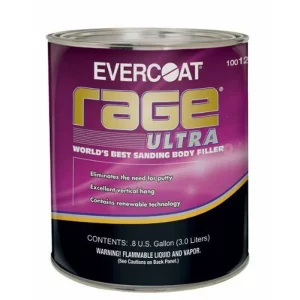
Tack-free, easy to sand, and provides a pinhole-free finish.
Contains EcoResin, which is environmentally friendly.
Pros:
- Spreads smoothly and self-levels
- Virtually eliminates micro-pinholes
- Can be applied directly to sanded OEM clearcoat
- Superior adhesion to aluminum, stainless steel, galvanized steel, SMC, and fiberglass
- Eliminates the need for finishing putty
Cons:
- Higher price than most others
2. 3M Bondo Professional Gold Filler
Featuring advanced 3M resin technology, Bondo® Professional Gold Filler is the ideal material for quickly and easily filling low spots, 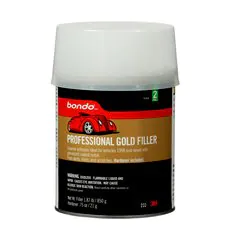
dents and scratches in auto body surfaces before priming and painting.
Pros:
- Adhesion promoted filler works faster on galvanized steel
- Minimal shrinkage
- Advanced resin technology makes for smooth, easy application and sanding
Cons:
- Not ideal for large repairs, and the finish may require extra sanding.
- Slower cure time
3. Dynatron DynaLite Lightweight Body Filler
Dynatron™ Dynalite™ is a preferred lightweight body filler among auto repair professionals.
 Pros:
Pros:
- Lightweight, smooth material for easy spreading
- Excellent adhesion and good feather-edge
- Compatible with nearly any paint system
- Fairly inexpensive
Cons:
- Tendency to have more pinholes
- Clogs up sandpaper fairly fast
4. USC Duraglas Fiberglass Reinforced Filler
Reinforced with fiberglass for added strength.
Waterproof and suitable for marine applications.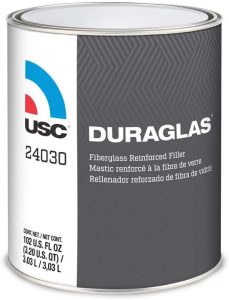
Pros:
- added strength for repairing holes, cracks, and rust-outs in metal, fiberglass, and wood surfaces.
- excellent adhesion properties, reducing the risk of de-lamination or cracking over time
- water-resistant
- can be used for both small and large repairs
Cons:
- Poses health and safety risks if not handled properly
- Longer curing time compared to some other fillers
- Hardness can make it more challenging to sand compared to softer fillers
- Due to its fiberglass reinforcement, it may be more expensive than standard body fillers
5. Evercoat Z-Grip Non-Clog Lightweight Filler
Non-clogging formula for a smoother application.
Excellent adhesion to various surfaces, including galvanized steel and aluminum.
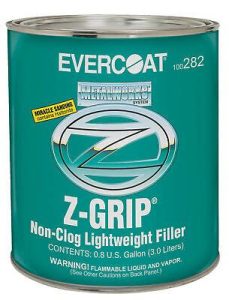
Pros:
- Designed to reduce clogging of sandpaper
- Sands easily to a fine finish
- Adheres well to metal, fiberglass, and other surfaces
- Relatively fast curing time
Cons:
- Not as durable as fiberglass reinforced filler
- May be among the higher priced fillers
6. 3M Bondo Lightweight Body Filler
Easy to mix and apply.
Suitable for repairing dents, scratches, and other minor imperfections.
 Pros:
Pros:
- Easy to mix, apply, and spread
- Fast curing time
- It can be used on a variety of materials, including metal, fiberglass, and even wood
- More economical price point
Cons:
- May not be as durable as some other fillers
- It can experience shrinkage as it cures
7. USC All-Metal Specialty Body Filler
Contains aluminum metal for superior adhesion and durability.
Waterproof and can be used for rust repair.
Pros:
- It contains aluminum metal fill
- The metal content helps to prevent rust and corrosion
- It can withstand high temperatures, making it suitable for areas exposed to heat
- It can be used on metal, fiberglass, and wood surfaces
- It is waterproof
Cons:
- More expensive than standard body fillers
- Heavier than other fillers
- Harder to sand
8. Evercoat Lite Weight Body Filler
Evercoat Lite Weight Body Filler is a popular choice for automotive body repairs.
Easy to sand and shape.
 Pros:
Pros:
- Smooth, creamy texture that spreads easily
- Lighter in weight
- Fairly priced
Cons:
- May not be as durable as other heavier fillers
- Can have some shrinkage
9. Fibreglass Evercoat Metal Glaze Ultra
Pinhole-free and ultra-smooth finish. 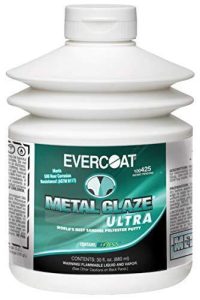
Pros:
- It is designed for fine finishing work, providing a smooth surface that’s ready for priming and painting.
- Creamy texture that spreads easily and smoothly over the surface, filling in minor imperfections.
- Excellent Adhesion
- Doesn’t clog sand paper
Cons:
- Premium product that costs more
- Not for larger repairs
- Not much work time
10. 3M Bondo Glass Reinforced Filler
Reinforced with short strands of fiberglass for added strength.
Suitable for repairing holes and rusted areas.
 Pros:
Pros:
- The fiberglass reinforcement in the filler makes it harder and more durable than standard Bondo
- Waterproof
- Twice as strong as regular Bondo
Cons:
- Harder to sand
- Higher price point
In conclusion, each type of body filler has its unique advantages and drawbacks, making them suitable for different repair situations.
Ultimately, the choice of body filler depends on the specific requirements of the repair job, including the size and location of the damage, the desired finish, and the durability needed. It’s essential to consider these factors and select the filler that best aligns with the repair needs and desired outcome.
Why trust Car Expressions
With over 37 years of experience in the auto body repair industry, I have honed my skills working on over 1,000 different vehicles, specializing in Corvettes and fiberglass repair among many other types of cars. My expertise extends beyond the workshop, as I have also spent a few years working as an insurance adjuster, giving me a unique perspective on the repair process from start to finish. My dedication to quality workmanship has resulted in thousands of satisfied customers and over $4 million in vehicle repairs conducted in my small shop. You don’t just have to take my word for it; I invite you to read the glowing reviews from my customers on Google: Quality Collision Reviews. My extensive experience and proven track record in the industry attest to my credibility and commitment to excellence in auto body repair.

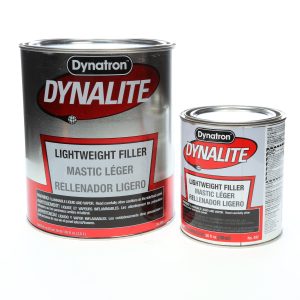 Pros:
Pros: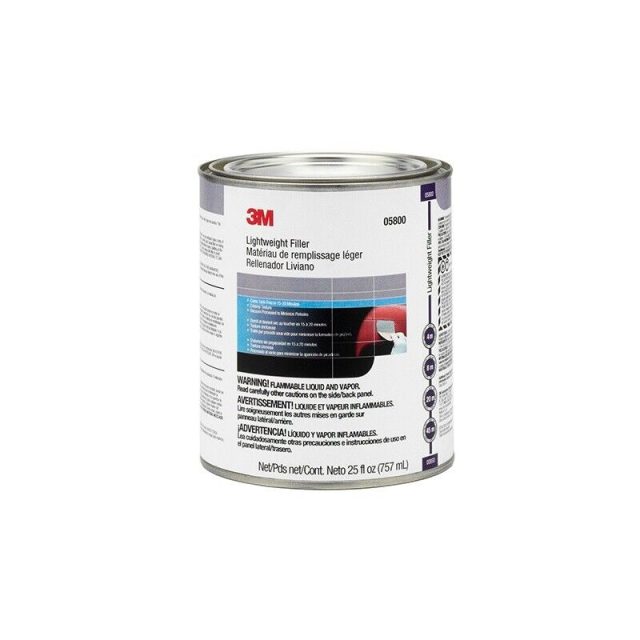 Pros:
Pros: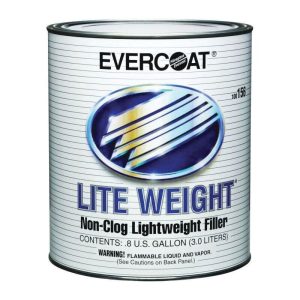 Pros:
Pros: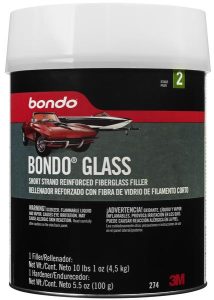 Pros:
Pros: